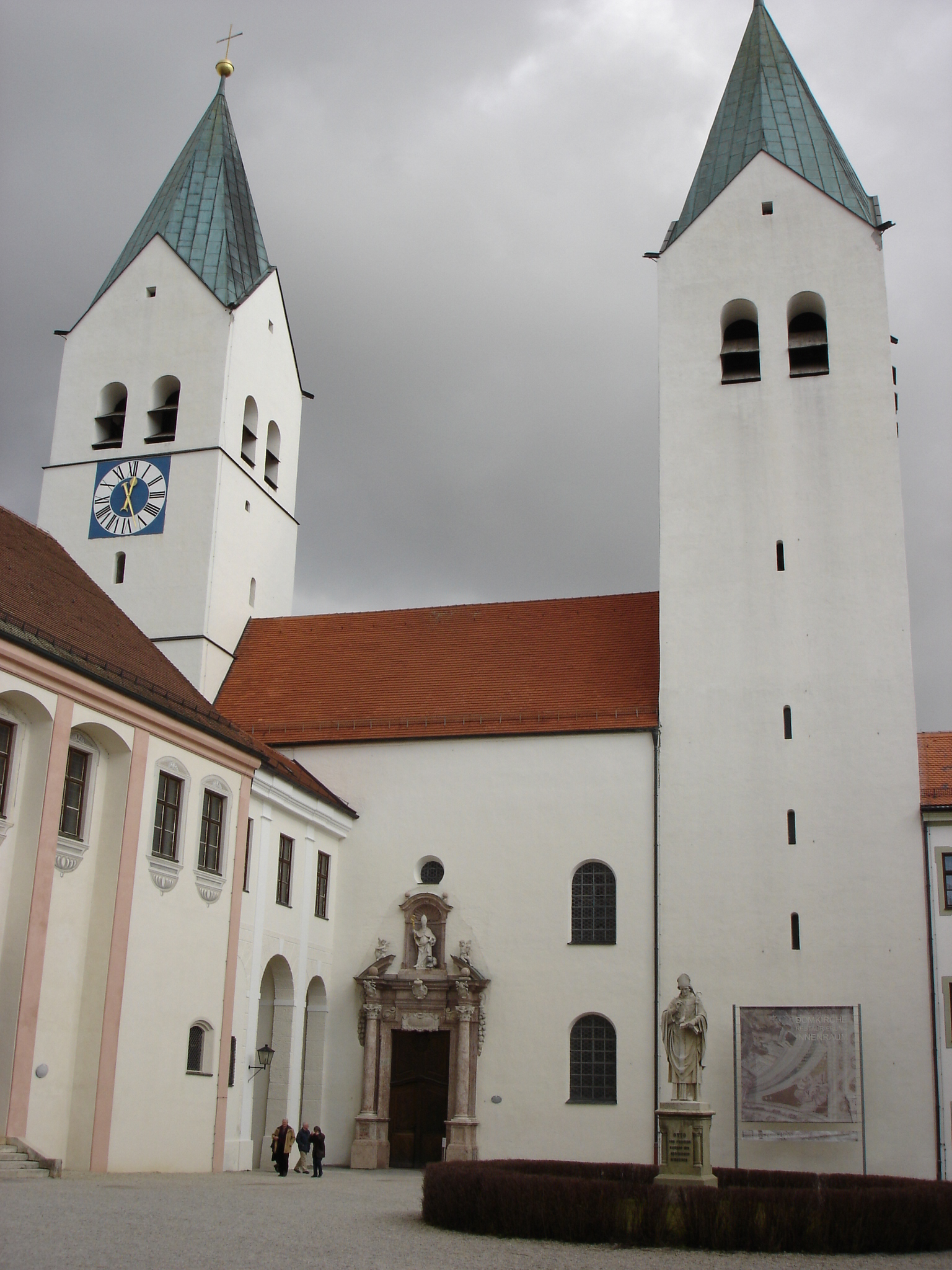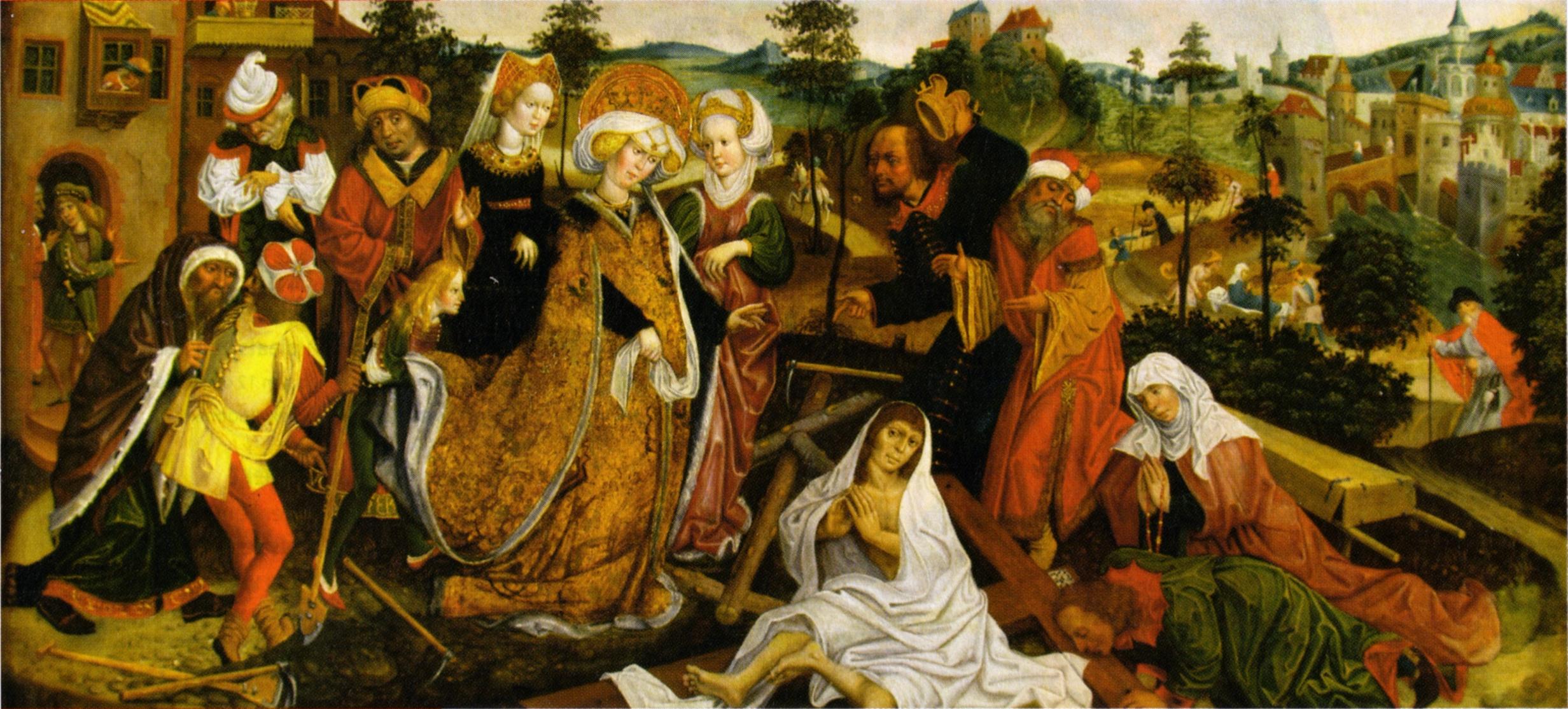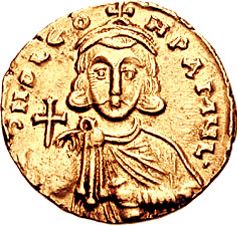|
Corbinian
Saint Corbinian ( la, Corbinianus; french: Corbinien; german: Korbinian; 670 – 8 September c. 730 AD) was a Frankish bishop. After living as a hermit near Chartres for fourteen years, he made a pilgrimage to Rome. Pope Gregory II sent him to Bavaria. His opposition to the marriage of Duke Grimoald to his brother's widow, Biltrudis, caused Corbinian to go into exile for a time. His feast day is 8 September. The commemoration of the translation of his relics is 20 November. Life Corbinian was born and baptized as Waldegiso at Châtres, near Melun, in Frankish territory. He was named after his father, who may have died when Corbinian was an infant. Soon after his father's death, his mother Corbiniana renamed Waldegiso to "Corbinian", after herself. Nothing else is known of his childhood. The early source for Corbinian's life is the ''Vita Corbiniani'' of Bishop Arbeo of Freising. He lived in Châtres on the road to Orléans as a hermit for fourteen years, near a church dedicate ... [...More Info...] [...Related Items...] OR: [Wikipedia] [Google] [Baidu] |
Freising
Freising () is a university town in Bavaria, Germany, and the capital of the Freising ''Landkreis'' (district), with a population of about 50,000. Location Freising is the oldest town between Regensburg and Bolzano, and is located on the Isar river in Upper Bavaria, north of Munich and near the Munich International Airport. The city is built on and around two prominent hills: the Cathedral Hill with the former Bishop's Residence and Freising Cathedral, and Weihenstephan Hill with the former Weihenstephan Abbey, containing the oldest working brewery in the world. It was also the location of the first recorded tornado in Europe. The city is 448 meters above sea level. Cultural significance Freising is one of the oldest settlements in Bavaria, becoming a major religious centre in the early Middle Ages. It is the centre of an important diocese. Some important historical documents were created between 900 and 1200 in its monastery: * Freising manuscripts written in Slovenian, b ... [...More Info...] [...Related Items...] OR: [Wikipedia] [Google] [Baidu] |
Arbeo Of Freising
Arbeo (also Aribo or Arbo) of Freising (723 or earlier near Meran – 4 May 784) was an early medieval author and Bishop of Freising from 764. Arbeo probably was a scion of the Huosi noble dynasty in the stem duchy of Bavaria. He may have been the child which, according to his own hagiography, Saint Corbinian rescued from the floodwaters of the Passer River near Meran. Arbeo was raised by Corbinians's brother Erembert and prepared for an ecclesiastical career, becoming a member of the Benedictine Order. At first a priest and notary under Bishop Joseph of Freising and official of the episcopal chancery, he was appointed abbot of the newly founded monastery of Scharnitz in 763. One year later he succeeded Joseph as Bishop of Freising. During his tenure the Bavarian monasteries of Innichen, Schäftlarn and Schliersee were established, and Scharnitz Abbey relocated to Schlehdorf. Arbeo had the relics of Saint Corbinian transferred to Freising. In the long-time quarrels of the Agilo ... [...More Info...] [...Related Items...] OR: [Wikipedia] [Google] [Baidu] |
Grimoald Of Bavaria
Grimoald (or Grimwald) (died 725) was the duke of Bavaria from about 715 to his death. He was the youngest of the four sons of Theodo of Bavaria and his wife Folchaid and the uncle of Swanachild, the second wife of Charles Martel. At first, he co-reigned with his brothers Theodbert, Theobald, and Tassilo II and then, from around 719, alone. His father divided the principality, after involving his two eldest sons with the reign of the duchy in 715. Upon Theodo's death in 716, the divided duchy was plunged into civil war and all the brothers save Grimoald were dead by 719. It is not certain if the division of the duchy was territorial or a powersharing scheme, but if the former, it seems most probable that Grimoald's capital was either Freising, which he later favoured as a diocesan seat, or Salzburg, which he later treated as a capital of sorts (''Vita Corbiniani''). It was Grimoald who induced Saint Corbinian Saint Corbinian ( la, Corbinianus; french: Corbinien; german: Ko ... [...More Info...] [...Related Items...] OR: [Wikipedia] [Google] [Baidu] |
Archdiocese Of Munich And Freising
The Archdiocese of Munich and Freising (german: Erzbistum München und Freising, la, Archidioecesis Monacensis et Frisingensis) is an ecclesiastical territory or diocese of the Roman Catholic Church in Bavaria, Germany."Archdiocese of München und Freising " ''''. David M. Cheney. Retrieved February 29, 2016"Metropolitan Archdiocese of München und Freising" ''GCatholic.org''. Gabriel Chow. Retrieved February 29, 2016 It is governed by the ... [...More Info...] [...Related Items...] OR: [Wikipedia] [Google] [Baidu] |
Châtres, Seine-et-Marne
Châtres () is a commune in the Seine-et-Marne department in the Île-de-France region in north-central France. History Châtres began as a Roman camp. Its name, formerly ''Chastres'', is derived from Latin ''castrum''. Châtres is documented as the place where Saint Corbinian was born circa 670 and where he maintained a hermitage for fourteen years. Demographics The inhabitants of Châtres are called ''Châtriots''. As of 2017, its population is 678. Places of interest Place of interest include the Château de Boulayes and its park. Agriculture The area produces cereal grain. See also *Communes of the Seine-et-Marne department The following is a list of the 507 communes of the Seine-et-Marne department of France. The communes cooperate in the following intercommunalities (as of 2020): [...More Info...] [...Related Items...] OR: [Wikipedia] [Google] [Baidu] |
Jan Polack
Jan Polack Johannes Po(l)lack (Hanns Polagk, Polegk), ( la, Ioannes Polonus) (between 1435 and 1450 – 1519) was a 15th-century painter. From his nickname it is assumed that he might have been born and/or worked in Kraków. From the mid-1470s on, he lived and worked in Munich, having previously been in Franconia. He may have taken part in the 1475 festival of the Landshut Wedding of Jadwiga Jagiellon and George of Bavaria. In 1480, he opened his own shop in Munich, where he remained until his death. Starting in 1482, he is listed on the tax records of Munich, also as leader of the local painter guild. He visited with Michael Wohlgemuth and his art was influenced by him and by that of Veit Stoss and Hans Pleydenwurff as well as by collaboration with the woodcutter Erasmus Grasser. Documents mention many works of his which are now lost. His most important remaining work is the Weihenstephan altarpiece (1483–1485), now at the Alte Pinakothek The Alte Pinakothek (, ''Old Pi ... [...More Info...] [...Related Items...] OR: [Wikipedia] [Google] [Baidu] |
Duchy Of Bavaria
The Duchy of Bavaria (German: ''Herzogtum Bayern'') was a frontier region in the southeastern part of the Merovingian kingdom from the sixth through the eighth century. It was settled by Bavarian tribes and ruled by dukes (''duces'') under Frankish overlordship. A new duchy was created from this area during the decline of the Carolingian Empire in the late ninth century. It became one of the stem duchies of the East Frankish realm which evolved as the Kingdom of Germany and the Holy Roman Empire. During internal struggles of the ruling Ottonian dynasty, the Bavarian territory was considerably diminished by the separation of the newly established Duchy of Carinthia in 976. Between 1070 and 1180 the Holy Roman Emperors were again strongly opposed by Bavaria, especially by the ducal House of Welf. In the final conflict between the Welf and Hohenstaufen dynasties, Duke Henry the Lion was banned and deprived of his Bavarian and Saxon fiefs by Emperor Frederick Barbarossa. Fr ... [...More Info...] [...Related Items...] OR: [Wikipedia] [Google] [Baidu] |
Pope Gregory II
Pope Gregory II ( la, Gregorius II; 669 – 11 February 731) was the bishop of Rome from 19 May 715 to his death.Mann, Horace. "Pope St. Gregory II." The Catholic Encyclopedia Vol. 6. New York: Robert Appleton Company, 1909. 18 September 2017 His defiance of Emperor as a result of the in the Eastern Empire prepared the way for a long series of revolts, schisms, and civil wars that eventually led to the establishment of the [...More Info...] [...Related Items...] OR: [Wikipedia] [Google] [Baidu] |
Monumenta Germaniae Historica
The ''Monumenta Germaniae Historica'' (''MGH'') is a comprehensive series of carefully edited and published primary sources, both chronicle and archival, for the study of Northwestern and Central European history from the end of the Roman Empire to 1500. Despite the name, the series covers important sources for the history of many countries besides Germany, since the Society for the Publication of Sources on Germanic Affairs of the Middle Ages has included documents from many other areas subjected to the influence of Germanic tribes or rulers (Britain, Czech lands, Poland, Austria, France, Low Countries, Italy, Spain, etc.). The editor from 1826 until 1874 was Georg Heinrich Pertz (1795–1876); in 1875 he was succeeded by Georg Waitz (1813–1886). History The MGH was founded in Hanover as a private text publication society by the Prussian reformer Heinrich Friedrich Karl Freiherr vom Stein in 1819. The first volume appeared in 1826. The editor from 1826 until 1874 was Georg He ... [...More Info...] [...Related Items...] OR: [Wikipedia] [Google] [Baidu] |
Orléans
Orléans (;"Orleans" (US) and , ) is a city in north-central France, about 120 kilometres (74 miles) southwest of Paris. It is the prefecture of the Departments of France, department of Loiret and of the Regions of France, region of Centre-Val de Loire. Orléans is located on the river Loire nestled in the heart of the Loire Valley, classified as a Loire Valley, World Heritage Site, where the river curves south towards the Massif Central. In 2019, the city had 116,269 inhabitants within its municipal boundaries. Orléans is the center of Orléans Métropole that has a population of 288,229. The larger Functional area (France), metropolitan area has a population of 451,373, the 20th largest in France. The city owes its ... [...More Info...] [...Related Items...] OR: [Wikipedia] [Google] [Baidu] |
Hermit
A hermit, also known as an eremite (adjectival form: hermitic or eremitic) or solitary, is a person who lives in seclusion. Eremitism plays a role in a variety of religions. Description In Christianity, the term was originally applied to a Christian who lives the eremitic life out of a religious conviction, namely the Desert Theology of the Old Testament (i.e., the 40 years wandering in the desert that was meant to bring about a change of heart). In the Christian tradition the eremitic life is an early form of monastic living that preceded the monastic life in the cenobium. In chapter 1, the Rule of St Benedict lists hermits among four kinds of monks. In the Roman Catholic Church, in addition to hermits who are members of religious institutes, the Canon law (canon 603) recognizes also diocesan hermits under the direction of their bishop as members of the consecrated life. The same is true in many parts of the Anglican Communion, including the Episcopal Church in the Un ... [...More Info...] [...Related Items...] OR: [Wikipedia] [Google] [Baidu] |
Germain Of Paris
Germain ( la, Germanus; 496 – 28 May 576) was the bishop of Paris The Archdiocese of Paris (Latin: ''Archidioecesis Parisiensis''; French: ''Archidiocèse de Paris'') is a Latin Church ecclesiastical jurisdiction or archdiocese of the Catholic Church in France. It is one of twenty-three archdioceses in France ... and is venerated as a saint in both the Catholic Church and the Eastern Orthodox Church. According to an early biography, he was known as Germain d'Autun, rendered in modern times as the "Father of the Poor". Biography Germain was born near Autun in what is now France, under Burgundy, Burgundian control 20 years after the collapse of the Western Roman Empire, to noble Gallo-Roman parents. Germain studied at Avallon in Burgundy and at Luzy, Nièvre, Luzy under the guidance of his cousin Scallion, who was a priest. At the age of 35, he was ordained by Agrippinus of Autun and became abbot of the nearby Abbey of St. Symphorian, Autun, Abbey of St. Symphorian. He was ... [...More Info...] [...Related Items...] OR: [Wikipedia] [Google] [Baidu] |






.jpg)
